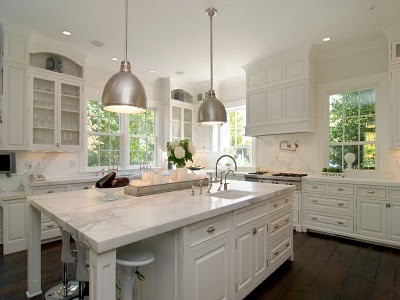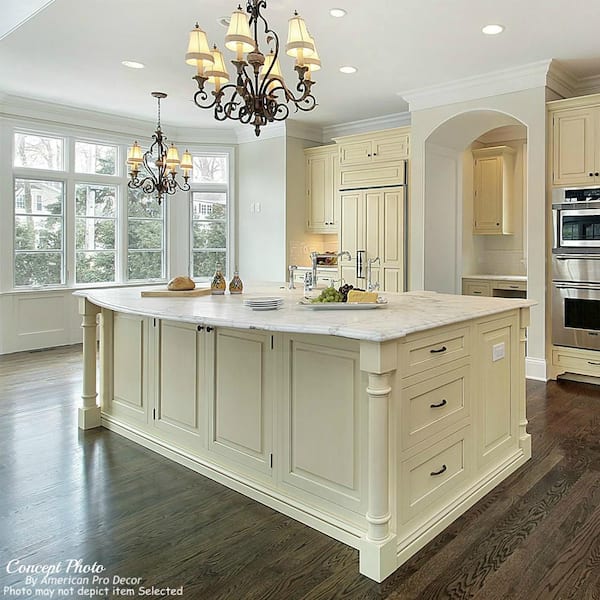Trick Considerations for Finding the most effective Legs For Kitchen Area Island for Your Design
When choosing the excellent legs for your kitchen area island, numerous key factors to consider come right into play that can considerably influence both functionality and looks. The choice of style, product, and elevation must align with your general cooking area layout to ensure a harmonious look.
Determine Your Design Choice
When selecting the optimal legs for your cooking area island,Establishing your design choice is crucial. The legs of your kitchen island not only serve a practical purpose but likewise contribute substantially to the general visual of the area. Consequently, recognizing your layout style-- be it modern-day, rustic, typical, or commercial-- is crucial.
For a contemporary kitchen area, think about smooth, minimalistic legs that match open rooms and tidy lines. On the other hand, a rustic setting may benefit from even more durable, farmhouse-style legs made from recovered materials. Traditional cooking areas usually prefer turned or ornate legs, which can include a touch of sophistication and class. An industrial visual may call for steel legs that stress a raw, unfinished look.
Additionally, think about the elevation and proportion of the legs in connection with the island's surface. This makes sure the aesthetic balance and performance necessary for daily usage. Analyzing the existing aspects in your cooking area, such as cabinetry and home appliances, can additionally direct your choice, ensuring cohesiveness in design. Eventually, your design preference will influence not just the selection of legs but likewise the general consistency of your cooking area's layout.
Pick the Right Product
Selecting the right material for your kitchen area island legs is essential in making sure both durability and aesthetic appeal. Various materials provide unique advantages, and the option typically shows your style preferences and practical demands.
Wood is a prominent choice, offering warmth and versatility. It can be discolored or repainted to match your kitchen area design, making it adaptable to numerous designs, from rustic to contemporary. Nevertheless, wood might require regular maintenance to preserve its look and honesty.

If you seek a special touch, consider acrylic or glass materials. They can develop an illusion of area and agility in your kitchen, making them an exceptional selection for smaller locations - Legs For Kitchen Island. These options may need mindful handling and upkeep to avoid scratches.
Eventually, the product you pick should line up with your cooking area's total design, guaranteeing that the legs serve both decorative and functional functions.
Think About Elevation and Percentages
When making a kitchen island, height and proportions play an important function in making certain capability and convenience. The conventional height for a kitchen area island normally varies from 36 to 42 inches, aligning with traditional counter elevations or bar heights, respectively. This measurement is vital for harmonizing with bordering kitchen counters and feceses, allowing ease of use throughout dish prep work and social interactions.
Additionally, the island's proportions have to enhance the general kitchen area layout. A well-proportioned island should not bewilder the area; rather, it should develop a well balanced aesthetic. Consider the proportion between the island's width and size, guaranteeing it offers adequate surface without crowding the cooking area. A general standard is to preserve a width of 24 to 48 inches, facilitating activity and ease of access.
Furthermore, the elevation of the legs or base can influence the aesthetic charm and functionality. Taller legs might lend a much read this article more modern, ventilated feel, while shorter ones can stimulate a standard, based appearance. Inevitably, thoroughly taking into consideration height and percentages will lead to a kitchen island that is both visually enticing and functionally efficient, boosting the overall style of the room.
Assess Stability and Toughness
A kitchen island's legs need to not just complement its height and percentages yet also supply ample stability and sturdiness to sustain daily activities. The legs are necessary to the overall functionality of the island, as they bear the weight of the counter top and useful link any kind of added tons, such as home appliances or cooking jobs.
When evaluating stability, it is vital to consider the leg design and material. As an example, strong steel or strong wood legs usually offer exceptional stamina compared to lighter materials like engineered wood or plastic. In addition, a bigger base can boost security, lowering the threat of tottering or tipping during use.
Sturdiness is similarly essential; the legs ought to withstand wear and tear from everyday usage. Take into consideration coatings that shield versus scratches, dents, and moisture, specifically in a cooking area setting. Moreover, examine the high quality of construction, such as joints and fastenings, which can substantially affect the legs' long-term efficiency.
Ultimately, purchasing well-crafted legs that prioritize security and longevity will certainly ensure your cooking area island stays a dependable workspace for several years to find, enhancing your cooking experiences while maintaining visual appeal.
Consider Maintenance and Treatment
Maintenance and treatment are vital considerations for making certain the durability and efficiency of kitchen island legs. When picking legs, it is important to evaluate the products made use of, as different alternatives need differing levels of upkeep. Wooden legs may call for regular refinishing or securing to protect against dampness damage and scratches, while metal legs may require normal polishing to keep their shine and prevent corrosion.
Additionally, the finish put on the legs can influence maintenance requirements. A high-gloss coating might be easier to tidy yet might show scrapes and fingerprints quicker than a matte finish. It is recommended to select products and finishes that complement your way of life; for example, if you frequently organize gatherings, choose durable products that can withstand wear and tear.
Furthermore, consider the cleansing procedure involved in preserving these legs. Smooth surfaces usually need minimal effort, while complex layouts might accumulate dirt and grime, requiring even more labor-intensive cleansing techniques. Legs For Kitchen Island. Inevitably, considering the maintenance and treatment needed for your selected kitchen island legs will not only improve their visual allure but likewise ensure their practical honesty in time
Final Thought
To conclude, picking the optimal legs for a kitchen island demands mindful consideration of different aspects, including design style, product selection, stability, maintenance, and elevation. Each component plays a vital role in ensuring that the legs not only enhance the visual charm of the kitchen but likewise provide the required support and toughness for day-to-day use. A knowledgeable choice will eventually add to a functional and aesthetically pleasing kitchen setting.
The legs of your cooking area island not only serve a practical objective however likewise add dramatically to the total aesthetic of the area.Maintenance and her latest blog care are essential considerations for guaranteeing the durability and efficiency of kitchen area island legs. Wooden legs might call for periodic refinishing or securing to protect against dampness damage and scrapes, while metal legs may require regular polishing to keep their shine and stop corrosion.
Eventually, factoring in the upkeep and treatment required for your selected cooking area island legs will not only boost their aesthetic appeal however additionally ensure their practical honesty over time.
